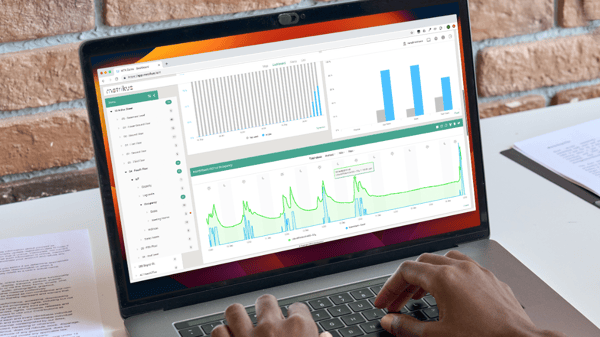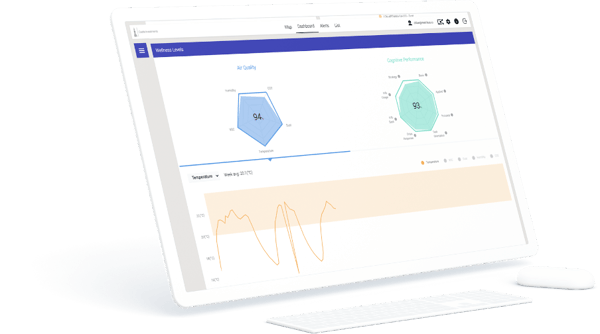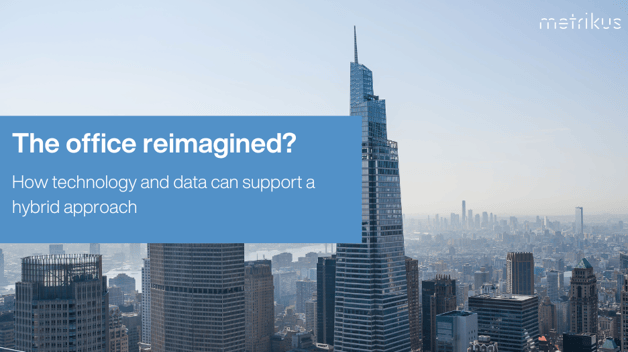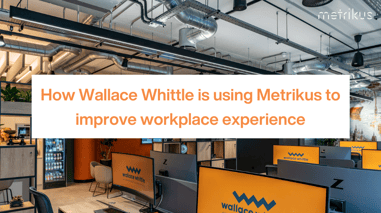The office reimagined? How technology and data can support a hybrid approach
The office reimagined?
Over three years have passed since the start of the pandemic, but companies around the world are still working out what the future of work will actually look like for them.
There are lots of things that remain uncertain. Will employees ever go back to the office five days a week? Where are employees at their most productive? Can we all just move to a tropical island and work from there?
There’s never going to be a one-size-fits-all answer and many companies are likely to decide they need to cut down on space. But whatever happens, there’s a general consensus that companies still need some sort of fixed physical space for teams to get together.
So – what role will offices play for organizations, and how can technology support a hybrid approach? Let’s find out.
The return to office debate
In recent months, many organizations have been calling their employees back to the office, with some high-profile bosses sharing their reservations surrounding remote work.
JPMorgan CEO Jamie Dimon said earlier this year that working from home “doesn’t work,” with the company recently asking its managing directors to work from the office for five days a week, citing “the importance of being together.”
In contrast, Morgan Stanley’s CEO James Gorman has stated that “five days in the office for everybody is not going to happen again,” although he has also shared his wish for employees to come in “at least three or four days.”
There are also banks like BNP Paribas that have taken a very different approach, with Przemek Gdanski, CEO of the Polish division, explaining: “The only thing we want is for people to be in the office at least four days a month, but I don’t expect them to work very intensely on those days. I want them to be together to maintain and develop relationships and basically chat about life, grab a pizza, and move on.”
The current reality for most companies probably lies somewhere in the middle, with a recent survey finding just 59% of finance workers in New York were at their workplace on an average weekday in January.
And at the end of the day, whether employers are keen to come back to the office on a daily basis, or just a few times a month, the most important thing is for organizations to create an office that employees want to return to in some capacity.
.jpg?width=800&height=450&name=redd-f-5U_28ojjgms-unsplash%20(1).jpg)
How can technology and data support a hybrid approach?
It’s clear that the next generation of the office is all about employee experience, collaboration, and productivity. But with many offices half empty, companies are likely starting to consider how they can cut office costs and energy bills, all while maintaining a seamless workplace experience.
Luckily, there’s a wide range of technologies on hand that can help to facilitate a hybrid working model and make offices more efficient in every way.
1. Improving space optimization to reduce costs
There's no two ways about it: Commercial Real Estate is very expensive. When it comes to budgets, renting physical office space is usually one of the biggest financial outgoings for companies.
This graph shows the annual net effective cost for prime office space in markets around the world, in Q4 2021 and Q1 2022 – all in US dollars per square foot.
With costs so high, you can understand why companies want to reduce this space where possible, especially if a large portion of it isn’t even being used.
Getting real-time data about space utilization is the first step in running a building as effectively and efficiently as possible. This involves installing sensors to monitor different data points – such as occupancy – to gain a comprehensive view of how often and when different areas are being used.
A common concern with occupancy monitoring is that it might infringe on occupancy privacy. But in reality, the majority of sensors don’t actually capture any identifiable information about employees. An occupancy sensor would count ‘one person at desk X’, not ‘Joe Bloggs is at desk 12’, and the data is used to show general trends rather than individual behavior.
Occupancy monitoring can highlight specific areas in an office that are underused, allowing companies to make informed decisions about downsizing – something that could save businesses around the world a massive $1.5 trillion in reduced rental costs.
And this same data can also be used to reduce energy consumption, ensuring compliance with ever-growing sustainability regulations, such as Local Law 97.
If you know a specific area – or even an entire floor – is completely empty, you can make sure HVAC systems are adjusted accordingly to avoid energy being wasted in unoccupied areas. It’s thought that at least 30% of the energy consumed by commercial buildings goes to waste, so there are some big potential savings on offer!
All of this means better utilized space, improved operational efficiency, and reduced costs. When it comes to buildings, it’s clear that data really is power.
- Want to find out more about ESG compliance? Read ‘How bad are buildings? The past, present and future of ESG’

2. Optimizing indoor air quality to increase productivity
Indoor air quality is the type of thing that you don’t notice until it’s bad, and so it’s rarely considered as a contributing factor to productivity. But poor air quality can significantly hinder employee performance and impact even the most motivated of workers.
There are a number of factors that can have an impact on the air quality in your office, including temperature, humidity, carbon dioxide (CO2), total volatile organic compounds (TVOCs) and particulate matter (PM2.5).
And these parameters can have a huge effect on your employees – elevated levels of CO2 can cause a 23% impairment in decision-making and an 11% reduction in productivity. And according to a study by the National Institute for Occupational Safety and Health, productivity losses due to poor indoor air quality in the US amount to approximately $60 billion annually.
As with occupancy, getting real-time data is the best way to start optimizing your indoor air quality. Sensors can be installed to assess key parameters, and alerts can be set up to notify you when these parameters exceed optimal levels. These sensors can even be integrated with your Building Management System (BMS) so that any necessary changes to boost indoor air quality are made automatically.
Maintaining a healthy workplace is not only better for your employees, but also for your company’s bottom line, so it’s a no-brainer to start monitoring indoor air quality throughout your space.

3. Using workplace data to drive a seamless experience
As we’ve explained, occupancy and indoor air quality data are both vital for helping companies to make data-driven decisions about their workplaces.
But the same data can also be incredibly valuable for employees – helping them to make more informed decisions of their own.
As organizations start to reduce their Real Estate footprints, some employees no longer have an assigned office or desk to come into the workplace.
With occupancy data displayed on employee apps or digital signage, employees can easily book a free desk or empty meeting room. And once they arrive at the office, they can quickly navigate their way to their reserved space, where they will be checked in automatically. If they don’t turn up, it’ll be released so that it can be used by other employees, avoiding no-show meetings clogging up your board rooms.
Employees can also take a look at real-time indoor air quality data across the office and select a space based on their preferences for factors like noise, light, and temperature.
As we’ve already mentioned, working in a space that’s comfortable is really important. 53% of people are less productive when their work environment is too cold, and 71% are less productive when it’s too warm, so being able to choose an area that suits your preferences could have a big impact on employee productivity.
- Want to empower employees with workplace data? Find out about Metrikus and Appspace’s joint solution
.png?width=600&height=338&name=City%20AM%20article%20_%20Are%20you%20asking%20the%20right%20questions%20about%20your%20building%E2%80%99s%20energy%20usage%20(3).png)
The office reimagined?
There isn't a blanket policy on what the future of work holds or what employees are going to want or need. But it’s clear that offices and headquarters still have an important role to play in fostering connections, collaboration and innovation.
Technology and data have the potential to transform workplaces for the better: reducing costs, increasing productivity, and creating a more seamless experience.
Leading companies have already started to reinvent their headquarters – it’s time for others to follow suit.
If you want to get started, book a workplace consultation with a Metrikus expert.




